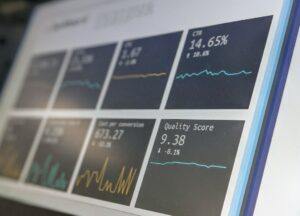Oanda and Forex are two of the most popular forex trading platforms in the market today. Both platforms offer a wide range of features and tools to help traders make informed decisions and maximize their profits. However, there are some key differences between the two platforms that traders should consider when choosing which one to use. In this article, we will compare the pros and cons of Oanda and Forex to help traders make an informed decision.
One of the main advantages of Oanda is its user-friendly interface. The platform is intuitive and easy to navigate, making it suitable for both beginners and experienced traders. Oanda also offers a wide range of educational resources, including webinars, tutorials, and a demo account, which allows traders to practice their trading strategies without risking real money. This is particularly beneficial for novice traders who are just starting out in the forex market.
Another advantage of Oanda is its wide range of trading instruments. The platform offers over 90 currency pairs, as well as a variety of other instruments, including commodities, indices, and bonds. This allows traders to diversify their portfolios and take advantage of different market conditions. Oanda also offers competitive spreads and low trading costs, making it an attractive option for cost-conscious traders.
On the other hand, Forex is known for its powerful charting tools and advanced technical analysis capabilities. The platform offers a wide range of chart types, including candlestick, line, and bar charts, as well as a variety of technical indicators and drawing tools. This allows traders to analyze market trends and make more accurate predictions about future price movements. Forex also offers a wide range of order types, including market, limit, and stop orders, giving traders more flexibility in executing their trading strategies.
In terms of customer support, both Oanda and Forex offer excellent service. Oanda provides 24/7 customer support through phone, email, and live chat, ensuring that traders can get assistance whenever they need it. The platform also has an extensive knowledge base and a community forum where traders can ask questions and share their experiences. Forex also offers 24/7 customer support and provides a dedicated account manager for each trader, ensuring personalized assistance.
When it comes to regulation and security, both platforms are highly reputable and reliable. Oanda is regulated by several financial authorities, including the Financial Conduct Authority (FCA) in the UK and the Commodity Futures Trading Commission (CFTC) in the US. Forex is also regulated by reputable authorities, such as the Australian Securities and Investments Commission (ASIC) and the Financial Services Commission (FSC) in Mauritius. Both platforms also use advanced encryption technology to protect traders’ personal and financial information.
While both Oanda and Forex have their advantages, there are also some drawbacks that traders should be aware of. One disadvantage of Oanda is that it does not offer as many advanced trading tools and features as Forex. This may be a limitation for experienced traders who rely on sophisticated analysis techniques. Additionally, Oanda’s mobile app is not as advanced as Forex’s, which may be a drawback for traders who prefer to trade on the go.
On the other hand, Forex has a higher minimum deposit requirement compared to Oanda. This may be a disadvantage for beginner traders who have limited capital to invest. However, Forex offers a wide range of account types, including a micro account with a smaller minimum deposit, which can be beneficial for traders with limited funds.
In conclusion, both Oanda and Forex are reputable forex trading platforms that offer a wide range of features and tools to help traders succeed in the market. The choice between the two platforms ultimately depends on individual preferences and trading needs. Traders should consider factors such as user-friendliness, trading instruments, charting tools, customer support, regulation, and security when choosing a platform. By carefully evaluating the pros and cons of each platform, traders can make an informed decision that aligns with their trading goals and preferences.





